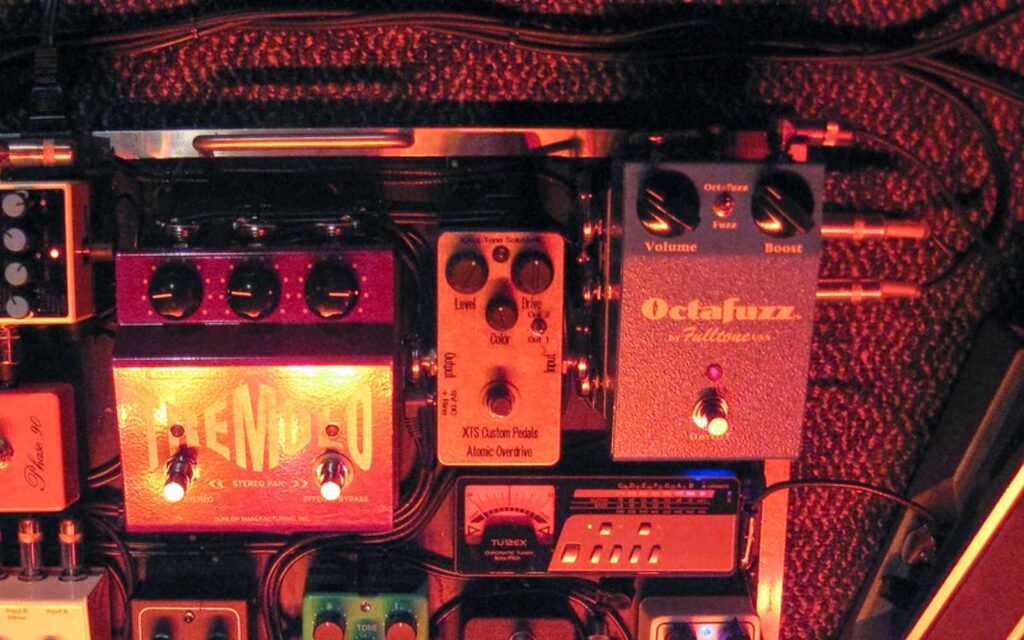The 5150 was designed by James Brown, now of Amptweaker fame.
The Peavey 5150 is etched so deeply into the collective consciousness of modern Metal/Rock guitarists that it seems like there was never a time when it wasn’t available. In essence, it is this omnipresence that may make it hard for some players to grasp what made the 5150 such a big deal in the first place. Many would gesture towards the amplifier’s association with the late Eddie Van Halen when trying to pinpoint the root of its success.
While this is certainly a contributing factor, I think that delving into the commercial landscape that surrounded the 5150 upon its release in 1992 is necessary to truly acknowledge the scope of its importance. But first a little history.
Read up on all the latest features and columns here.
Much like EVH is a legend amongst guitar-playing circles James Brown himself is a renowned figure in the amp-building community. He has designed a variety of well-known circuits including the Peavey XXX, Classic 50 and the Transtube Bandit line, as well as amps for other companies including Kustom.
By 1990, Eddie Van Halen was using a smorgasbord of boutique amplifiers on tour, and this posed significant problems when it came to accessing the support required for a band of Van Halen’s popularity.
Soldano Sl100
In particular, Eddie was fond of Mike Soldano’s SLO100 circuit alongside his own personal Jose Arredondo (a legendary amp tech from LA)-modded Marshalls, one of which was famously stolen. The Soldano in particular, was an amp built to order, and only made in small batches. This made them hard to obtain while on the road and even harder to repair, as at this point in time Mike Soldano himself was the only person familiar with the circuit.
This dilemma is what eventually led EVH to Peavey.
The mission was centred around designing an amp that provided the hot-rodded tones Eddie was enamoured with, all at a price that was accessible to the average consumer in the early 1990s. This point is profoundly important when it comes to deciphering key aspects leading to the 5150s legacy. For context, prior to 1992 there were minimal options for homegrown guitarists looking for the high-gain tones they were hearing on their favourite records.
Additionally, the options that were available were generally out of reach for the average Joe due to both availability and exorbitant prices. This left most players scattering for whatever cheap stompboxes they could find to push the preamps of their amps into as much saturation as possible.
Marshall JCM800
Another common practice of the time was the implementation of various homebrew modifications. More often than not, these mods sought to add extra gain stages to classic circuits such as the Marshall JCM800.
The issue with a lot of these modifications (though not all of them) was that they were often installed by amateur technicians resulting in workmanship that was less than ideal. Unfortunately, this meant that in many cases that extra gain stage would cost you the reliability of your amp at some point down the line, in worst cases your amp entirely!
Taking all of this into account highlights what made the release of the first 5150 (now known colloquially as the “Block Letter”) in 1992 such a revelation.
Not only did it directly address these problems at an accessible price point, but it could also be found within the direct radius of anyone living near a Guitar Center or similar retailer! This all meant that upon its initial release there really wasn’t a contender to the 5150. To put it into perspective, the Mesa Boogie Dual Rectifier was introduced in the same year but its price point put it out of reach of most working players.
For many, the 5150 was simply the only option, especially if they needed a high-gain amp that they could use professionally, with a budget of less than a thousand dollars in 1992. Regardless, none of this would really have mattered if the amp didn’t sound great. Fortunately, after numerous prototypes and revisions, James Brown and Eddie had cracked the code to come up with a classic circuit. Like many high-gain amplifiers since its initial introduction, the 5150 took inspiration from the aforementioned Soldano SLO100 circuit, as did the Mesa Dual Rec.
Before work on the design had commenced, James had also taken the time to arrange a lineup of all of Peavey’s then current product line for Eddie to test out. The only amp in this initial lineup that really spoke to him was the now discontinued VTM series, a circuit based off the modded Marshalls of the 1980s.
However, it is worth mentioning that Eddie did take notice of the signature Resonance and Presence controls incorporated into the design of the classic Peavey 50/50 power amp. These two features specifically would become prominent in the 5150’s power amp circuit and sonic signature just a few years later.
Needless to say, upon its release the 5150 was a notable success. But what people didn’t see coming was just how much of an impact it would have on the trajectory of modern metal moving forward. Two early examples of the 5150 being implemented on landmark metal albums would be Carcass “Heartwork” (1993) and Machine Heads “Burn My Eyes” (1994).
With veteran producer Colin Richardson at the helm of both records, “Heartwork” would do much to shape the sound of Melodic Death Metal and the soon-to-come rise of Metalcore. In a similar vein, “Burn My Eyes” would do much to influence both Hardcore, Nu Metal and Groove Metal genres.
“Burn My Eyes” in particular is an early example of the Tubescreamer into 5150 Crunch channel formula that has become such a prominent template for modern metal and hardcore productions until the current day. Additionally, I asked ex-Carcass alumni Mike Hickey about how he and Bill Steer were dialling in their 5150’s back in the 90s. Coincidentally it was the same 5150 Crunch channel boosted by a stomp box, albeit not a Tubescreamer, that provided those classic tones.
For 33 years now, the original Peavey 5150 circuit has remained in production with no period of discontinuation. After EVH’s contract with Peavey ended in 1996, the amp became the 6505 series that is still available in stores in 2025. At the end of the day, it really goes without saying: with so many bands still making noise with the 5150 both on stage and in the studio, you can rest assured that there is no sign of its midrange roar dying down anytime soon.
Keep up with growing range of Peavey products in 2025 here.







